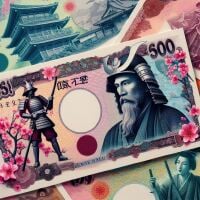This nation is in Vacation Mode for the next 888 turns. This nation cannot be attacked or traded with during that time.
Karifu-sei Heavatochia
Led by Karifu Abdur Rehman, Karifu-sei Heavatochia is a nation rooted in the Nile Delta region of northern Africa. Governed as a Communist Monarchy with strong conservative social values, it embraces left-wing economic policies to ensure equitable development across its urbanizing landscape. The official currency, the Heavatochian Doru, symbolizes the nation's growing influence and cultural identity.
Founded on November 24, 2024, the nation has rapidly grown into a significant regional power. At 47 days old, it boasts a population of 1,552,962 residing within an area of 18,400 square miles, giving it an average population density of 84.4 people per square mile. Despite its impressive infrastructure network, measuring 15,850, the nation's approval rating has dropped to 0%, reflecting widespread discontent amidst rapid growth and centralization.
Environmental sustainability is a focal point, with pollution being carefully managed to maintain a pristine landscape in harmony with the Nile Delta's rich biodiversity. However, global radiation levels continue to pose challenges.
Key Statistics
- State Religion: Sunni Islam
- Domestic Policy: Urbanization
- Pollution Index: 50 points
- Radiation Index: 333.44 R (below the global average of 384.15 R)
- GDP: $2.17 billion
- GDP per Capita: $1,394.41
Cities and Urban Development
- Azuma Indasu – Population: 199,607 | Infrastructure: 2,000
- Nishi Indasu – Population: 193,509 | Infrastructure: 2,000
- Robin Mokuzai – Population: 191,948 | Infrastructure: 1,900
- Neo Ichi – Population: 210,862 | Infrastructure: 2,150
- Yukun'na o no Shori-sha – Population: 199,962 | Infrastructure: 2,000
- Samuraitaun Ochi – Population: 191,874 | Infrastructure: 2,000
- Imuran Kan Taun – Population: 184,447 | Infrastructure: 1,900
- Moze no Kairo – Population: 180,753 | Infrastructure: 1,900
Military Overview
Karifu-sei Heavatochia maintains an active and resilient military force. While the nation has seen action in four wars, winning two and losing two, its capabilities include:
- Soldiers: 120,000 deployed
- Tanks: 8,982 active
- Aircraft: 600 operational
- Ships: 116 in service
- Nuclear Weapons: None
Cultural Identity
Karifu-sei Heavatochia blends its Islamic heritage with the natural beauty of the Nile Delta, celebrating both in its infrastructure and cultural achievements. Its government headquarters and urban architecture reflect themes of Islamic artistry intertwined with the lush ecosystems of the region.
Challenges and Aspirations
While the nation faces domestic challenges with governance and public approval, it continues to strive for balanced development, emphasizing environmental stewardship and urban expansion. Its vision is to rise as a beacon of harmony between tradition, modernity, and ecological preservation.
| National Factbook |
| Flag: |

|
| Nation Name: |
Heavatochia |
| Leader Name: |
Abdur Rehman |
| Currency: |

Heavatochian Doru |
| National Animal: |

Nairufaitāfisshu |
| History: |
History of Karifu-sei Heavatochia
The history of Karifu-sei Heavatochia is one of transformation, resilience, and a deep connection to the natural world. Located along the fertile banks of the Nile River, the land that would become Karifu-sei Heavatochia has been inhabited for thousands of years, with a rich cultural heritage shaped by both the river’s life-giving waters and the influences of various civilizations.
Ancient Beginnings
The earliest traces of human settlement in what is now Karifu-sei Heavatochia can be traced back to ancient Egyptian times. The Nile has always been the lifeblood of the region, fostering agriculture and trade, and the people of the river have long revered it as a divine force. As the ancient Egyptians built their civilization along its banks, the foundations for a culture of reverence, spiritual connection, and innovation were laid.
Over time, various dynasties and peoples passed through the region, including the Romans, Arabs, and Ottoman Turks. During these periods, the area saw a blend of cultures, religious influences, and artistic traditions. The arrival of Islam in the 7th century further shaped the region's identity, as the people of what is now Heavatochia adopted Islamic teachings and integrated them with their long-standing respect for the river’s divine status.
Formation of Heavatochia
The modern history of Karifu-sei Heavatochia began in the early 20th century when the region began to unify under the leadership of local tribal leaders. The people of the Nile Delta, deeply influenced by the Islamic faith and their connection to the land, formed a collective vision of a united nation that would blend traditional values with the aspirations of the modern world.
By the 1950s, political tensions and growing dissatisfaction with colonial rule led to a movement for independence. Heavatochia, a name derived from the Heavatochian word for "unity of the river," became the rallying cry for a new national identity. In 1965, after years of struggle, the region officially declared its independence, forging a new nation on the banks of the Nile. The leadership of Karifu Abdur Rehman, a charismatic figure with deep spiritual and political insight, was pivotal in this transformation.
The Rise of the Communist Monarchy
In the aftermath of independence, Karifu-sei Heavatochia underwent significant political and social change. Inspired by the communist ideals of equity and community solidarity, Karifu Abdur Rehman established a Communist Monarchy in 1973. This system was a unique blend of monarchy and socialist governance, designed to ensure the fair distribution of resources while maintaining traditional leadership structures. Under this system, the monarchy became more symbolic, with real power resting in the hands of the council and the people.
The nation’s government pursued policies of land redistribution, nationalization of key industries, and the establishment of state-run programs focused on education, healthcare, and agricultural innovation. The spiritual leadership of the royal family continued to play an important role in maintaining cultural unity and guiding the people toward collective well-being.
Modern Karifu-sei Heavatochia
In the 21st century, Karifu-sei Heavatochia has focused on balancing its traditional heritage with the demands of modernization. The country’s economy, while still heavily dependent on agriculture and fishing, has diversified into technology, renewable energy, and conservation efforts. The government has made environmental sustainability a core part of its policy, initiating programs such as Project Nahrat Jannah to preserve the Nile’s ecosystem and protect species like the Aqirra fluminis, which has become a national symbol.
Heavatochia has also remained a stronghold of Islamic faith, with mosques, spiritual leaders, and cultural practices continuing to shape the daily life of its citizens. However, the influence of Japanese-inspired aesthetics and philosophies has led to a unique fusion of cultures, reflected in the nation’s art, architecture, and societal norms.
Today, Karifu-sei Heavatochia stands as a beacon of unity, resilience, and innovation. The nation’s commitment to sustainability, its rich spiritual life, and its deep connection to the Nile continue to guide its path as it navigates the challenges of the modern world. |
| Geography |
| Continent: |
Africa |
| Land Area: |
35,566.41 sq. km |
| Terrain: |
Terrain of Karifu-sei Heavatochia
The terrain of Karifu-sei Heavatochia is a diverse and dynamic landscape, shaped by the powerful Nile River that runs through the heart of the nation. This varied topography supports a rich ecosystem and plays a critical role in the cultural, economic, and spiritual life of the country.
The Nile River
At the center of Heavatochia's geography is the mighty Nile, which serves as both a lifeline and a spiritual symbol for the nation. The river is a source of water, agriculture, and trade, creating a fertile band of land that has sustained civilizations for thousands of years. The Nile Delta, a vast expanse of wetlands and lush plains, is the backbone of Heavatochia's agricultural economy. Rice, wheat, and cotton are among the key crops grown here, thanks to the river's nutrient-rich waters. The river’s floodplain, rich in biodiversity, is also home to the beloved Aqirra fluminis and many other aquatic species.
Desert and Arid Regions
To the west and east of the Nile Delta lies the expansive desert, characterized by vast stretches of arid land, rocky plateaus, and rolling sand dunes. While this terrain is inhospitable for large-scale farming, it is integral to the nation's identity, providing natural borders and a rugged beauty. The desert is dotted with small oases that sustain nomadic tribes, and it holds a wealth of mineral resources that have been increasingly exploited for the nation’s growth in recent years.
The Eastern Desert, known for its dramatic mountain ranges, contains mineral-rich deposits that are important to Heavatochia’s mining industry. The highlands of this region, while difficult to access, also hold a deep spiritual significance to the people. These mountains are often viewed as places of reflection and retreat, where people go to connect with nature and their faith.
The Heavatochian Highlands
To the north and south of the Nile Delta, the Heavatochian Highlands rise with lush, green hills and fertile plateaus. These highlands offer a cooler, more temperate climate compared to the rest of the nation, and are rich in flora and fauna. The terrain here is more hospitable to farming, with orchards and vegetable gardens thriving in the cooler temperatures. The Highlands also provide ideal conditions for the cultivation of exotic plants and herbs, many of which are used in Heavatochian culinary and medicinal traditions.
The Wetlands and Marshlands
In the southern part of the nation, the wetlands and marshlands are a critical part of Heavatochia's ecosystem. These areas are vital for waterfowl, fish, and other aquatic life, and they play a key role in flood prevention, as well as serving as natural water filters. The wetlands are also deeply connected to Heavatochian spirituality, with many villages and shrines found along the banks of these waters, creating a tranquil, spiritual landscape that complements the vibrancy of the Nile.
Climate and Seasons
Heavatochia experiences a predominantly hot, dry climate, with temperatures rising sharply in the summer months, especially in the desert regions. Winters tend to be mild, with temperatures dropping more significantly in the desert, where the difference between day and night temperatures is stark. The Nile, as a natural water source, helps to moderate temperatures along its banks, creating a more temperate climate in the river valley, where most of the population resides.
Conclusion
The terrain of Karifu-sei Heavatochia is marked by dramatic contrasts—fertile plains nourished by the Nile, rugged desert expanses, lush highlands, and vital wetlands. This diversity in landscape plays a crucial role in sustaining the nation's agricultural traditions, biodiversity, and the cultural practices of its people. Each region has its unique beauty and function, creating a harmonious relationship between the land, the river, and the people who call this extraordinary place home. |
| Highest Peak: |
Mount Mokattam, 129 meters |
| Lowest Valley: |
, 0 meters |
| Climate: |
Climate of Karifu-sei Heavatochia
Karifu-sei Heavatochia’s climate is shaped by its geographical location along the Nile River, its diverse terrain, and its proximity to both desert and highland regions. The country experiences a predominantly hot, dry climate, with variations in temperature and rainfall depending on the area.
General Climate Characteristics
Heavatochia has a semi-arid to arid climate, typical of many regions in northeastern Africa. The presence of the Nile River creates a microclimate along its banks, moderating the extreme temperatures seen in the surrounding desert areas. While the country is mostly dry, the Nile provides the essential water resources needed to sustain both human life and the region's agriculture.
Summer Season
Summers in Karifu-sei Heavatochia are long, hot, and dry, particularly in the desert regions and the lowlands surrounding the Nile. Temperatures in the summer months can reach up to 40°C (104°F) during the day, with intense sunshine and little rainfall. The heat is tempered somewhat along the river valley, where the temperature remains slightly cooler due to the river’s moderating effects. The humidity in the Nile Delta can also be high during the summer, but the heat remains the dominant feature.
Winter Season
Winter temperatures in Heavatochia are more moderate, especially along the Nile River, where the weather remains relatively mild. In the lowlands, temperatures during the winter months generally range between 15°C and 20°C (59°F to 68°F), providing a pleasant climate for both agriculture and daily life. However, in the desert regions, temperatures can drop significantly at night, with chilly nights and mornings contrasting the warmer days. This large fluctuation between day and night temperatures is characteristic of desert climates.
Rainfall and Precipitation
Heavatochia receives very little rainfall, particularly in the desert and arid regions. The country experiences sporadic rainfall, with most of the precipitation occurring during the short rainy season, typically from late autumn to early spring. Rainfall is generally light, with some areas of the Nile Delta receiving occasional thunderstorms. These rains are crucial for replenishing the soil and providing temporary relief to the dry conditions, but they are not enough to sustain the country’s agricultural needs without the constant flow of the Nile.
The wetlands and marshlands in the southern part of the nation receive slightly more rainfall due to their proximity to the equator, but these areas are still relatively dry compared to other regions in the world. However, their high humidity and evaporative water sources help support the aquatic life and ecosystems that thrive in these regions.
Winds and Dust Storms
Strong winds and occasional dust storms are common in the desert regions, especially during the transition between seasons. These winds can cause temporary disruptions in visibility and are a challenge for those living in the arid landscapes. The winds also bring dust and sand from the desert, contributing to the dry and harsh conditions in certain areas of Heavatochia. However, the cities along the Nile River are largely shielded from these storms.
Microclimates
Due to the diverse terrain, Heavatochia has several microclimates. The Nile River Valley itself creates a humid, temperate environment compared to the surrounding arid deserts. The Heavatochian Highlands, located to the north and south of the river valley, offer a cooler and more temperate climate, where temperatures rarely exceed 25°C (77°F). These highlands experience mild winters, with occasional rainfall, making them an ideal region for agriculture, particularly for crops that cannot thrive in the harsher conditions closer to the Nile.
Conclusion
Heavatochia’s climate, with its hot, dry summers, mild winters, and occasional rainfall, is shaped by the geography of the Nile and surrounding deserts. While the nation faces the challenges of arid conditions and fluctuating temperatures, the river itself provides the sustenance needed for both the land and its people. The country’s diverse terrain ensures that microclimates exist, supporting varied ecosystems and agricultural practices that have sustained Heavatochia for centuries. |
| People & Society |
| Population: |
997,038 people |
| Demonym: |
|
| Demonym Plural: |
|
| Ethnic Groups: |
- 0.0% |
| Languages: |
- 0.0% |
| Religions: |
- 0.0% |
| Health |
| Life Expectancy: |
0 years |
| Obesity: |
0% |
| Alcohol Users: |
0% |
| Tobacco Users: |
0% |
| Cannabis Users: |
0% |
| Hard Drug Users: |
0% |
| Economy |
| Description: |
|
| Average Yearly Income: |
$62.34 |
| Gross Domestic Product (GDP): |
$1,316,118,199.00 |
| GDP per Capita: |
$1,320.03 |
| Gross National Income (GNI): |
$880,131,435.00 |
| Industries: |
|
| Military |
| History: |
|
| Soldiers: |
0 |
| Tanks: |
0 |
| Aircraft: |
0 |
| Ships: |
89 |
| Missiles: |
5 |
| Nuclear Weapons: |
0 |
| Last Updated: 12/04/2024 02:52 pm |













